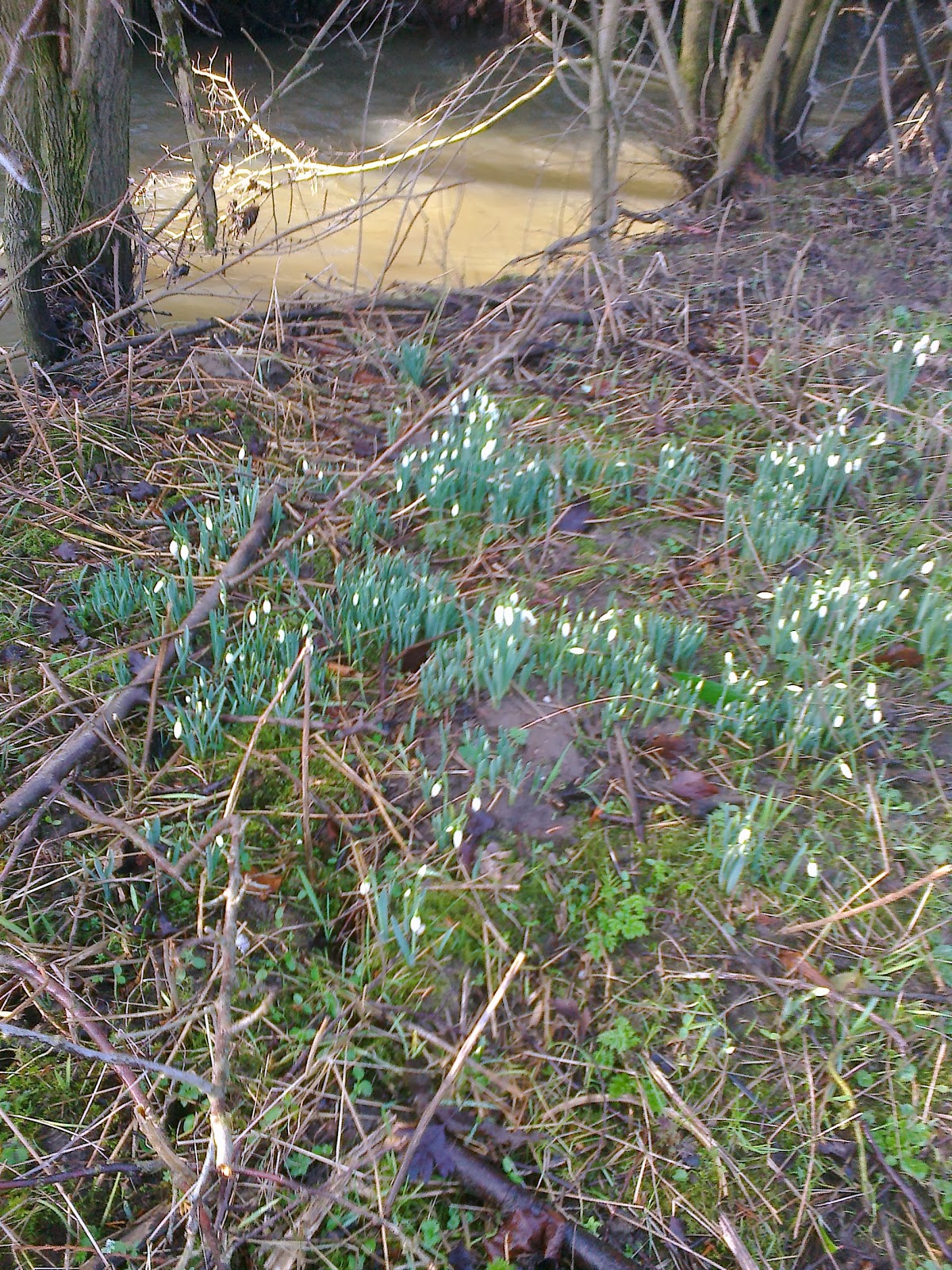We were working to clear some of the trimmings from the hedging process yesterday. We needed to burn some massive piles of hawthorn and blackthorn branches. Unfortunately we really need to have the wind coming from the North West so the smoke from the bonfires does not drift across the Ashbourne Road. Mostly this winter it has been coming from the South West.
We'd gathered a large pile of Ash branches fallen from the large old tree and dragged them to form a bonfire, as yet unlit, to form the nucleus of heat to burn the thorn bush branches. We'll need a large hot fire to get the process going, but once it has started it will just be a matter of feeding the fire with branches. We think it is about two days solid work to move all of the thorn branches. We've located the bonfire site on a patch of Alder which had grown up during the period of the neglectful owner. This will be an easier way to destroy these "weeds" rather than dig them up.
We've now planted some of the fruit trees in the orchard site. We chose the bare root saplings as Spring is rushing toward us and the sap will soon be rising. That leaves the saplings in pots to be planted. While we we there we tidied some of the heavy boughs fallen from the large Ash tree in the autumn storms. Those were converted into logs with our chainsaw and as they were already dead on the tree they are nicely seasoned and we were able to use them on our open fire kitchen range
We've now planted some of the fruit trees in the orchard site. We chose the bare root saplings as Spring is rushing toward us and the sap will soon be rising. That leaves the saplings in pots to be planted. While we we there we tidied some of the heavy boughs fallen from the large Ash tree in the autumn storms. Those were converted into logs with our chainsaw and as they were already dead on the tree they are nicely seasoned and we were able to use them on our open fire kitchen range
The Ash wood is a really nice fuel. The logs split easily, the fire is hot and almost smokeless and there is only a tiny wood ash residue afterwards. It is indeed a welcome bonus from the orchard site.
